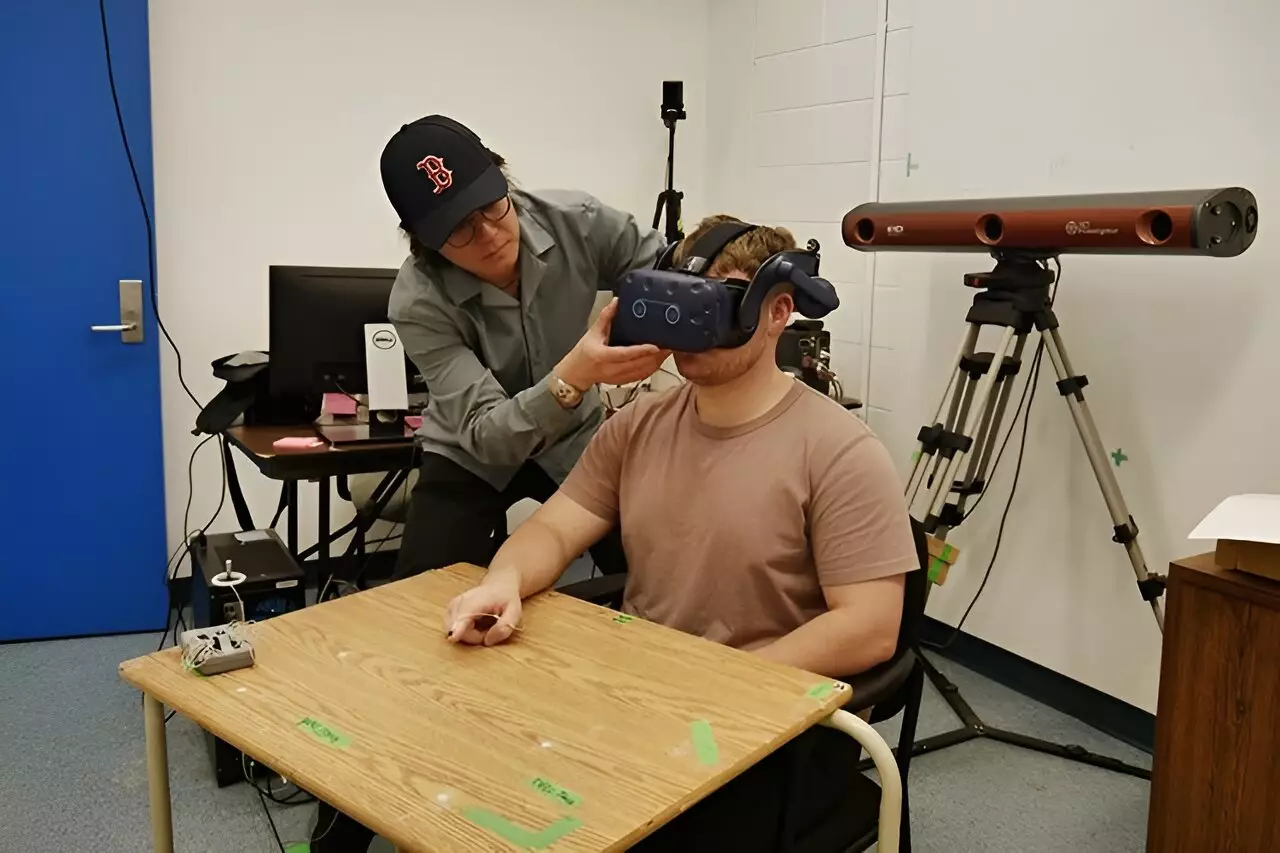Virtual and augmented reality (VR and AR) have become increasingly popular in various industries for training purposes. A recent study conducted by researchers at the University of Toronto has shed light on how using these technologies can temporarily alter the way individuals perceive and interact with the real world. The findings of this study have significant implications for understanding the effects of VR and AR on real-world movement.
The study revealed that participants who used VR tended to undershoot their targets in the real world, while those who used AR tended to overshoot their targets. This discrepancy in movement accuracy immediately after using VR or AR highlights the impact of these technologies on real-world interactions. Interestingly, the researchers found that movement patterns in VR and AR were transferred to real-world movements, indicating a lasting effect on individual behavior.
One of the surprising findings of the study was the difference in how quickly the effects of AR wore off compared to VR. Participants readjusted to real-world conditions faster after using AR, potentially due to the ability to see and interact with their actual surroundings in AR. This visual feedback may help individuals maintain a more accurate sense of depth and distance, leading to quicker adaptation to real-world tasks.
As industries and training programs increasingly integrate VR and AR technologies, it is crucial to understand the challenges in transferring skills learned in these digital environments to real-world scenarios. The study emphasizes the importance of recognizing the limitations and effects of VR and AR on real-world performance, particularly in professions such as surgery, aviation, and driving. This awareness is essential for ensuring the effective and safe use of these technologies in skill development.
Moving forward, the researchers plan to explore how different types of VR and AR experiences, particularly those involving complex or immersive scenarios, impact real-world performance. They are also interested in investigating how factors like training duration and individual differences in prior experience with these technologies influence adaptation and readjustment. This ongoing research aims to guide the design of VR and AR systems that minimize negative after-effects and maximize their potential for training and skill development.
The study conducted by researchers at the University of Toronto offers valuable insights into the effects of VR and AR on real-world movement. By recognizing the challenges and implications of using these technologies for training purposes, industries can better harness the benefits of VR and AR while mitigating potential drawbacks. As technology continues to advance, understanding how VR and AR influence real-world performance is essential for optimizing skill development and ensuring the safe and effective use of these innovative tools.


Leave a Reply